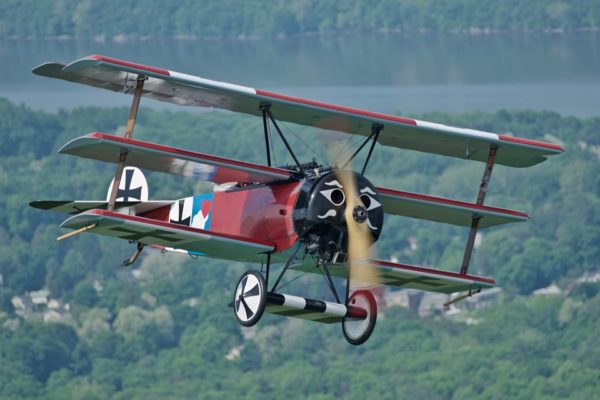
Fokker Dr.1
- : Germany
- : 1917
- : Le Rhone or Oberursel
- 110
- 23 ' 7"
- 102 mph (164 km/hr)
- 1290 lbs (585 kg)
- : Active
- : Reproduction
The Fokker Dr.I combined excellent maneuverability with a high rate of climb. It was favored by Manfred von Richthofen, and Werner Voss, two of Germany’s legendary fighter pilots. Both lost their lives in this type of aircraft in two of the most talked about air battles of the war.
The Dr.I was inspired by the success of the Sopwith Triplane which entered combat in the Spring of 1917. Looking to create a rugged and maneuverable fighter, Fokker’s Reinhold Platz developed a triplane that featured a steel tube fuselage and cantilever wings, which did not require external bracing. This wing design was a tremendous breakthrough in aircraft development. However, many triplanes suffered wing failures in flight, resulting in fatal crashes. The design was slightly modified, but evidence indicates the failures were caused by poor workmanship – insufficient varnish resulting in moisture absorption and deterioration of the wooden wings.
This aircraft was built by Hank Palmer and Louis Wilgus. It is fitted with a “modern” W-670, 220 HP Continental radial engine to make it more suitable for movie and photography work and to ensure its availability to fly in our weekend air shows.
Cole Palen purchased this aircraft in 1987 and flew it from Florida to New York, landing on grass runways all along the East Coast. Cole took the Fokker past the Statue of Liberty during his trip, giving New York City tourists on the Circle-Line an unexpected treat!
The wheels are thought to be original German World War I equipment according to its builders.
Click for more information about the Fokker Dr.1
